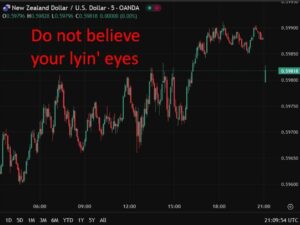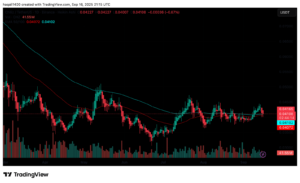AUD/USD holds above 0.6500 as markets eye US NFP and Fed outlook

- AUD/USD slips nearly 0.5% but holds above the 0.6500 psychological level.
- Australia’s July trade surplus widened to A$7.31B as exports rose and imports fell.
- Markets expect NFP to show 75K jobs in August, with Unemployment Rate edging up to 4.3%.
The Australian Dollar (AUD) is under pressure against the US Dollar (USD) on Thursday, with AUD/USD down almost 0.50%, trading near 0.6510 at the time of writing. The pullback reflects broad Greenback resilience as markets digest a mixed batch of US labor data and stronger services activity, though the pair is holding firm above the 0.6500 psychological level.
The US Dollar is regaining ground, with the DXY index hovering near 98.40, underpinned by cautious positioning ahead of Friday’s Nonfarm Payrolls (NFP). Labor signals this week have pointed to softer hiring and rising layoffs, while the ISM survey showed services demand holding steady despite weakening employment. These dynamics reinforce expectations for a Fed rate cut later this month, though uncertainty remains over the pace and size of easing.
Australia’s external sector offered mixed signals earlier on Thursday. July trade data showed the surplus widening to A$7.31 billion, compared with A$5.37 billion in June and beating expectations of A$4.92 billion. The improvement came as exports rose 3.3%, driven by stronger shipments of iron ore, liquefied natural gas, gold and meat, while imports fell 1.3% on weaker demand for consumer goods and gold. Despite delivering the largest surplus in over a year, the data did little to shift sentiment around the Aussie.
Looking ahead, all eyes are on Friday’s US NFP report. Markets expect job growth to slow to 75K in August from 73K previously, with the Unemployment Rate seen edging up to 4.3% from 4.2%. Average Hourly Earnings are forecast to rise 0.3% MoM and 3.7% YoY, slightly softer than July’s 3.9% pace. A weaker print would likely weigh on the USD by reinforcing the case for Fed easing, while a stronger outcome could keep the Greenback supported in the short term. Still, with a 25 basis point cut at the September Fed meeting already almost fully priced in, that should cap the upside for the US Dollar.
Economic Indicator
Nonfarm Payrolls
The Nonfarm Payrolls release presents the number of new jobs created in the US during the previous month in all non-agricultural businesses; it is released by the US Bureau of Labor Statistics (BLS). The monthly changes in payrolls can be extremely volatile. The number is also subject to strong reviews, which can also trigger volatility in the Forex board. Generally speaking, a high reading is seen as bullish for the US Dollar (USD), while a low reading is seen as bearish, although previous months’ reviews and the Unemployment Rate are as relevant as the headline figure. The market’s reaction, therefore, depends on how the market assesses all the data contained in the BLS report as a whole.
Read more.




